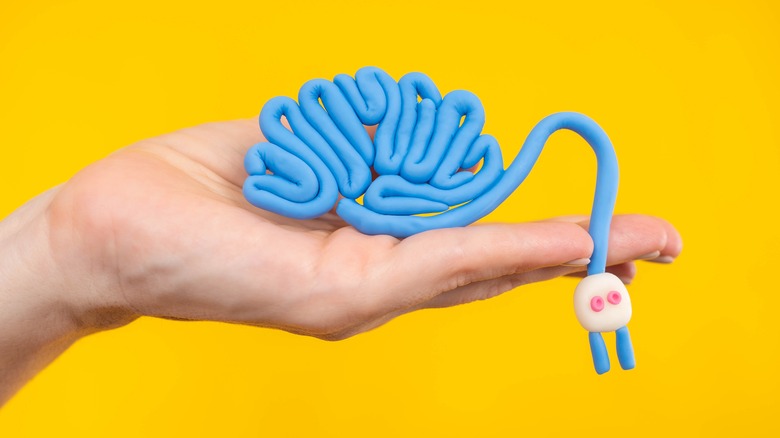What Happens To Your Body When You Have A Migraine
If you've ever had a migraine, just hearing the word "migraine" might send you running. Migraines can be completely incapacitating, filling you with throbbing pain and sending you to bed for days. What's really happening inside when you have a migraine?
A migraine is a type of headache that's sometimes on just one side of the head (via Mayo Clinic). A migraine "attack" can come on and last for a few hours to a few days. Symptoms of an attack include nausea, sensitivity to light and sound, and vomiting. Sometimes, you may experience a prodrome stage for a few days ahead of an attack, with noticeable changes like constipation, neck stiffness, fluid retention, and frequent yawning. This stage might be followed by an aura, which begins gradually and might include visual disturbances, pins-and-needles sensations, weakness on one side of the body, and difficulty speaking. Once a migraine ends, you might be left feeling drained, exhausted, or confused.
You're more likely to experience migraines if you have a family member who experiences them, you're in your 30s, you're female, or you experience hormonal changes, like during menstruation. They can be treated with over-the-counter pain relievers, but it's possible to overuse medications and actually cause more headaches.
What's happening inside the brain
What happens inside of the body to cause such intense sensations? Typically, migraines are caused by some kind of sensory trigger, which spurs a reaction in the brain (via Everyday Health). With such a strong reaction, the electrical system of the brain misfires, which causes a change in blood flow to the brain. This change then affects the nerves, which is what precipitates the physical pain and sensation.
Common triggers of migraines include red wine, changes in weather, bright lights, caffeine (and lack of it), computer screens, dehydration, hormonal changes, and hot weather. In fact, your risk of migraine increases almost 8% whenever the temperature rises nine degrees Fahrenheit. It might be helpful to keep track of your symptoms and triggers in a headache diary, especially if you get migraines regularly.
Pain relievers can be necessary, but there are also preventative medications that may be useful. Other alternative treatments that may help include acupuncture, using ice packs on the back of the neck, magnesium supplements, progressive muscle relaxation, and resting in a quiet, dark space.


